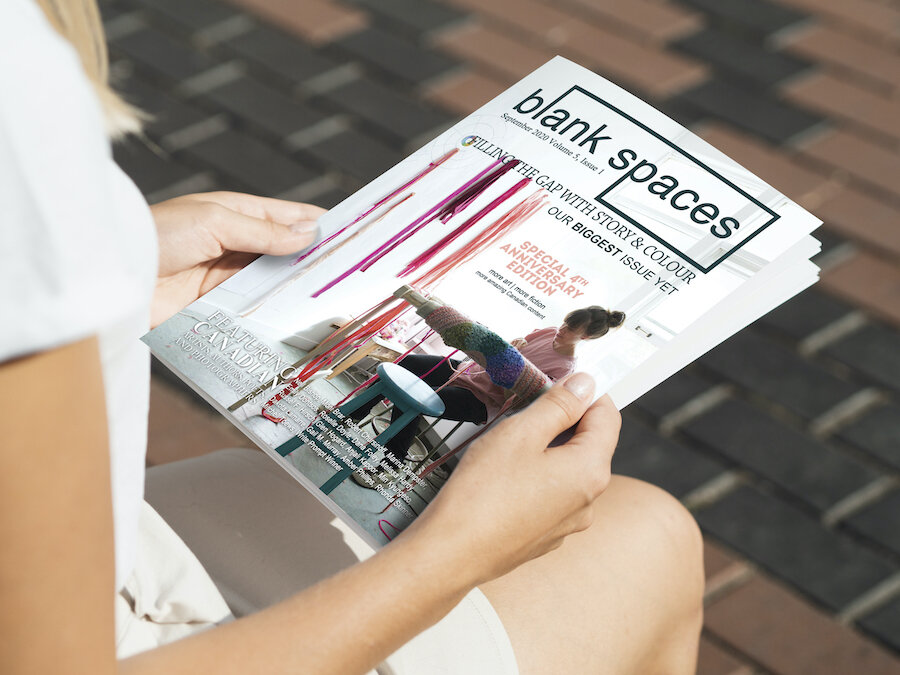What We’re Talking About in Issue 0501 (September 2020)
The complete table of contents
as it appears in the September 2020 issue of Blank Spaces.
from the editor — It Feels Like Home to Me
shameless — Identity Theft by Emily Dontsos explores the generational and cultural barriers that come into focus through the process of dying.
— In Tattoos, Heartbreaks, and Other Scars, Dana Foley examines how the break down of her first relationship and the experience of her first tattoo blended together to teach her some big things about pain and loss.
— Rhonda Skinner invites you to travel with her from the hospital to the forest and back again. Have Some More shows us how food is used for more than sustenance, how a simple phrase fits in many contexts, and how a daughter’s love lasts forever.
red solo cup — Through poems like From India, with Love and Pennywise & Dirt Poor, Moni Brar finds the courage to examine how colonization, religious violence, and intergenerational trauma marginalizes Punjabi women in Canada.
— Glen Hogard shares fives poems from a larger collection written over a year-long period. One poem per day regardless of the external, or internal, weather. Composed under the visual pressure of the Rocky mountains and polished by inconsiderate prairie winds, 172, 193, 286, 344, and 347 are each named for the day in sequence on which it was written.
flash fiction — The Margin of the River by Mitchell Toews moves like the tide through visceral daily experiences—some mundane, some quintessentially Canadian, some heart wrenching, each powerfully evocative.
— In Psychosis, playwright Kyungseo Min puts the brain on centre stage as she documents its reactions during a psychotic episode.
— Unseasonable by Robert Chursinoff mixes the paradox of a summer storm, the love of a family, and the feeling of apocalyptic doom into a tight little snapshot through a cabin window.
different strokes — Marina Dempster has settled into her role as artist-in-residence at The Orchard Lyceum in Toronto where she tackles her love for sculptural fibre art in fresh and unique ways, lending her voice as a mentor and her art as inspiration through her Healing Fibres.
fiction feature(s) — In his short story, Lassoing the Stars, Neil B. Bishop propels us into a Space Race Regina winter where a bullied youth, about to commit the irreparable, sees his destiny changed through unexpected events at his part-time supermarket job and the Cold War’s effects on science education in Canada.
— November Witch by Melissa Hardy drops us into the middle of an ugly neighbourhood battle, where through tragedy and aggressive weather lessons might be learned and rifts mended if only pride and guilt could be set aside.
more than words — In her photographic collection, At the End of the Day, Amber Phillips captures the ever-changing view along the shores of Lake Huron, where no sunset is ever the same.
make art not war — Professional figure skater Roselle Doyle has discovered a way to translate the movement of a blade along the ice to the canvas. Art in Motion is a glimpse at the way paint dances in vibrant colours and sweeping swirls.
—Anjali Kapoor Kohli (cover artist from our September 2019 issue) was forced to examine and reshape her creative practice when the global pandemic rendered her low on supplies. In Creating During Covid: Lessons Learned, we see the ways she has reinvented what it means to live creatively when life is inconvenient, turning hardship into artistic opportunity.
between the lines — Gail M. Murray brings us a review of The Last Hoffman by Canadian author, Gwen Tuinman.
write prompt challenge winner — Catherine Geiling rose to the top with her tender contest entry, Cape Split, a story that is “sorrowful and melancholy yet glimmers with a sense of hope.”
final word — Blurring Lines, by Dakota LaMarre is a poignant poem that will ring true for any writer: what is more real, the fiction on our pages or the life we are living?
Prefer digital? No problem! Sign up for a digital subscription through our 5th Year Subscription Campaign today and you’ll receive this issue in your inbox on September 1.

